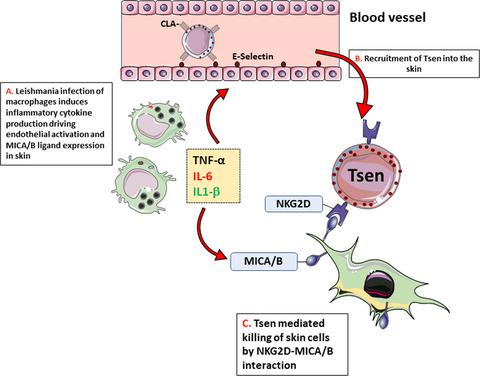当前位置:
X-MOL 学术
›
Aging Cell
›
论文详情
Our official English website, www.x-mol.net, welcomes your
feedback! (Note: you will need to create a separate account there.)
The role of senescent T cells in immunopathology
Aging Cell ( IF 8.0 ) Pub Date : 2020-11-09 , DOI: 10.1111/acel.13272 Luciana P Covre 1, 2 , Roel P H De Maeyer 1 , Daniel C O Gomes 2 , Arne N Akbar 1
Aging Cell ( IF 8.0 ) Pub Date : 2020-11-09 , DOI: 10.1111/acel.13272 Luciana P Covre 1, 2 , Roel P H De Maeyer 1 , Daniel C O Gomes 2 , Arne N Akbar 1
Affiliation

|
The development of senescence in tissues of different organs and in the immune system are usually investigated independently of each other although during ageing, senescence in both cellular systems develop concurrently. Senescent T cells are highly inflammatory and secrete cytotoxic mediators and express natural killer cells receptors (NKR) that bypass their antigen specificity. Instead they recognize stress ligands that are induced by inflammation or infection of different cell types in tissues. In this article we discuss data on T cell senescence, how it is regulated and evidence for novel functional attributes of senescent T cells. We discuss an interactive loop between senescent T cells and senescent non‐lymphoid cells and conclude that in situations of intense inflammation, senescent cells may damage healthy tissue. While the example for immunopathology induced by senescent cells that we highlight is cutaneous leishmaniasis, this situation of organ damage may apply to other infections, including COVID‐19 and also rheumatoid arthritis, where ageing, inflammation and senescent cells are all part of the same equation.
中文翻译:

衰老 T 细胞在免疫病理学中的作用
不同器官组织和免疫系统中衰老的发展通常是相互独立的,尽管在衰老过程中,两个细胞系统中的衰老是同时发展的。衰老的 T 细胞具有高度炎症性,会分泌细胞毒性介质,并表达绕过其抗原特异性的自然杀伤细胞受体 (NKR)。相反,它们识别由组织中不同细胞类型的炎症或感染诱导的应激配体。在本文中,我们讨论有关 T 细胞衰老的数据、其调控方式以及衰老 T 细胞新功能属性的证据。我们讨论了衰老 T 细胞和衰老非淋巴细胞之间的相互作用循环,并得出结论:在严重炎症的情况下,衰老细胞可能会损害健康组织。虽然我们强调的衰老细胞诱导免疫病理学的例子是皮肤利什曼病,但这种器官损伤的情况可能适用于其他感染,包括 COVID-19 和类风湿性关节炎,其中衰老、炎症和衰老细胞都是同一个方程式的一部分。
更新日期:2020-12-17
中文翻译:

衰老 T 细胞在免疫病理学中的作用
不同器官组织和免疫系统中衰老的发展通常是相互独立的,尽管在衰老过程中,两个细胞系统中的衰老是同时发展的。衰老的 T 细胞具有高度炎症性,会分泌细胞毒性介质,并表达绕过其抗原特异性的自然杀伤细胞受体 (NKR)。相反,它们识别由组织中不同细胞类型的炎症或感染诱导的应激配体。在本文中,我们讨论有关 T 细胞衰老的数据、其调控方式以及衰老 T 细胞新功能属性的证据。我们讨论了衰老 T 细胞和衰老非淋巴细胞之间的相互作用循环,并得出结论:在严重炎症的情况下,衰老细胞可能会损害健康组织。虽然我们强调的衰老细胞诱导免疫病理学的例子是皮肤利什曼病,但这种器官损伤的情况可能适用于其他感染,包括 COVID-19 和类风湿性关节炎,其中衰老、炎症和衰老细胞都是同一个方程式的一部分。











































 京公网安备 11010802027423号
京公网安备 11010802027423号